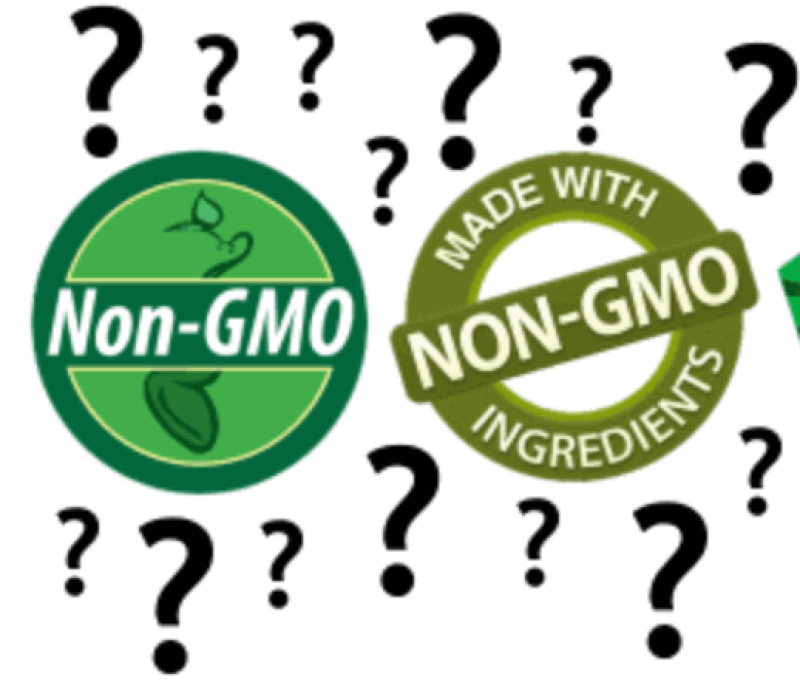Consumers go through continual food fads: High-carb, low-carb, Mediterranean diet, Atkins diet, gluten-free—the list is long. The newest is, “non-GMO” labeling.
Despite many studies showing the safety and merits of food made from genetically modified (GM) crops, or the endorsement from over 270 scientific societies and national agencies, a series of negative stories have produced a public unease about these technologies.
Other than it somehow involves DNA, surveys show most people have little idea what is a genetically modified organism (GMO). Not surprisingly, polls also show concern about any food containing DNA (virtually all food).
Some marketers use anti-GMO promotions as a means to boost sales, and trade associations use anti-GMO campaigns to promote memberships and donations.
Other organizations and companies have gone further, seeing opportunity in providing profitable lab services that test for the presence of minute GM-derived ingredients and related audit services. The GM crop origins within ingredients are sometimes detectable, sometimes not. For example, sugar and vegetable oil from GM and non-GM sources are chemically identical because there is no detectable DNA in highly processed ingredients. But this fact means little to the anti-GMO campaigners. There’s money to be made in certification, and companies are eager to comply.
One of the biggest is called the Non-GMO Project, which is linked to a GMO-testing company. A “Non-GMO Project” label may cost several thousand dollars per product, and it is being used on an increasing array of products. When this occurs on products traditionally made using large quantities of corn, soybeans, canola and other common GE crops, it is somewhat understandable. Some customers are willing to pay premiums for non-GMO based food alternatives.
Increasingly we’re seeing “Non-GMO Project” labels on foods for which there is no GMO equivalent. Federal law states these misleading labels are illegal, but enforcement is lacking. A leading cereal company recently introduced a non-GMO version of its famous oat cereal, while another company markets a non-GMO-labeled cereal made from 100-percent wheat. There are no GM oats or wheat grown commercially anywhere in the world.
The move to non-GMO labeling has meant price changes along with important changes in some minor ingredients. Many vitamins come from GM microorganism sources. There is a 90-percent reduction in riboflavin with the non-GMO oat cereal and the elimination of all vitamin A, B12, D, and riboflavin from a wheat-based cereal. The net effect has been price increases, smaller box sizes and poorer nutritional content.
The misleading marketing gets worse. A U.S. social media posting shows regular avocado oil selling for $1.47 per 100 ml, while “Non-GMO Project” certified avocado oil sells for $5.40 per 100 ml in the same store. There are no GM avocados grown anywhere.
One can buy “Non-GMO Project” certified pink rock salt, even though it contains only sodium chloride (salt) and some mineral impurities. Salt has no organic matter content (i.e. DNA), GM or non-GM. Some stores sell non-GMO verified bottled water. There seems little slow-down to this trend of labeling products with non-GMO (regardless of whether there is a GM counterpart).
So why does this continue? There seem to be two reasons. First, the public does not know what GMO means, and they are regularly exposed to negative stories about them. Secondly, there are food marketers eager to make money based on this. By using the public unease marketers, can convince some in the public to look for non-GMO labeled products.
The winner in all of this is corporate profits. The losers are consumers who are convinced to pay more for expensive and sometimes nutritionally inferior food products based on unsubstantiated fear generated by anti-GMO marketing campaigns.
Rather than focusing on GMO identity, maybe it’s most important that consumers understand what non-GMO labeling means. For many products it simply means more profits for the corporation. For us, personally, we’re not buying.
This article originally appeared in Forbes under the title: GMOs: Trust The Science, Not The Food Fad
Robert Wager has been a faculty member in the Biology Department at Vancouver Island University for 21 years. His research focuses on GE crop technology with an emphasis on public education. Twitter @RobertWager1
Terry Daynard is a grain-crop farmer near Guelph, Ontario, Canada. He’s a former professor of crop science and associate dean at the University of Guelph, and former executive vice-president of the Ontario Corn Producers’ Association. Twitter @TerryDaynard































